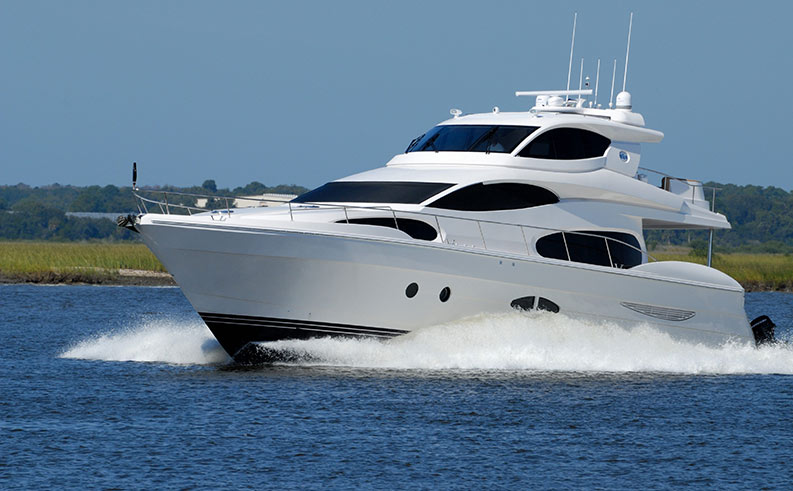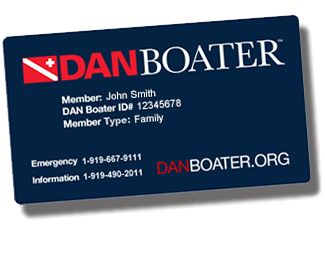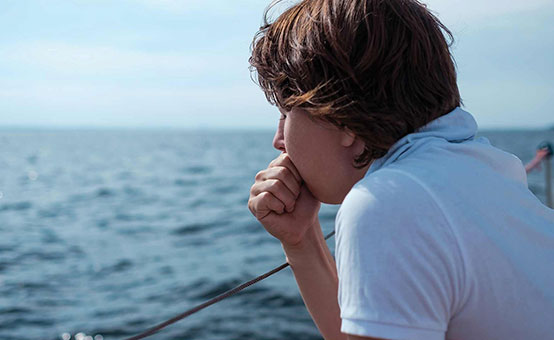

According to the U.S. Coast Guard's report on 2017 Recreational Boating Statistics, carbon monoxide poisoning ranks fifth in the top five known causes of death among boaters, and is the most common cause of illness and death by poisoning in boaters. An earlier joint study conducted by the U.S. National Park Service, the National Institute for Occupational Safety and Health, and the U.S. Coast Guard on carbon monoxide dangers associated with boating (particularly houseboats) revealed that more than 800 people have been poisoned by boating-related carbon monoxide in the last 15 years, with over 140 of these poisonings resulting in fatalities.
Carbon monoxide (CO) is one of the most dangerous poisons because often boaters don't realize it's present until it's too late. It's important to educate yourself about the dangers of carbon monoxide poisoning so that you can protect yourself and your fellow boaters.
Carbon monoxide is a poisonous gas that you can't see, smell or taste. It's produced when carbon-based fuels, such as gasoline and propane, are burned. Potential boating-related sources include engines, generators, space and water heaters, and cooking ranges.
Normally, the amount of carbon monoxide these sources produce isn't a cause for concern. However, if they're incorrectly installed, poorly ventilated or even partially enclosed, carbon monoxide can quickly build to dangerous levels.
When there's too much carbon monoxide in the air, it can enter your bloodstream through your lungs. Once in your bloodstream, it replaces the oxygen you need to stay alive. The resulting lack of oxygen can cause organ damage and death.
![5 Ways to Prevent Carbon Monoxide Poisoning on Boats [infographic]](images/5-ways-to-prevent-carbon-monoxide-poisoning-on-boats-infographic-m.png)
Grab the code and share the infographic:
You and your passengers are at increased risk for carbon monoxide poisoning if you:
Carbon monoxide poisoning can occur suddenly or gradually, so it's important to be alert to the signs and symptoms and to call for emergency medical assistance if you notice any of them. Common signs and symptoms include:
The symptoms of carbon monoxide poisoning can increase in severity with prolonged exposure to carbon monoxide. Prolonged or high exposure to carbon monoxide can cause increased heart rate, loss of consciousness and seizures. If you're asleep or intoxicated, you may not notice the symptoms of carbon monoxide poisoning as they develop, putting you at risk for irreversible brain damage or death.
Some of the early symptoms of carbon monoxide can be similar to those of sea sickness, heat stress or intoxication. If you or a fellow boater experiences any of these symptoms, seek fresh air immediately. Once out in the open air, consider the cause of your symptoms and take appropriate action.

Get Help with Sudden Illnesses While Traveling.
Join thousands of members who rely on DAN Boater for medical information in the field, emergency medical evacuation, and repatriation for better care. 24/7 assistance with unexpected injuries and illnesses any time you travel.
If you suspect you or a fellow boater may be suffering from carbon monoxide poisoning:
Carbon monoxide poisoning can pose a serious health risk for boaters. Depending on the circumstances, it may be necessary to perform on-site CPR and/or undergo emergency treatment at the closest medical facility. By taking steps to detect and treat carbon monoxide poisoning early, you can help to save your life or the lives of your passengers or fellow boaters.
MORE FROM
SAFE PASSAGE

BOATING SAFETY | Dec 1, 2018
How to Increase Your Chance of Survival in a Cold Water Boating Incident
[video]

TRAVEL HEALTH | Mar 25, 2018
17 Easy Ways to Beat Seasickness Right Now
THIS WEBSITE DOES NOT PROVIDE MEDICAL OR DENTAL ADVICE.
It is intended for general informational purposes only and does not address individual circumstances. It is not a substitute for professional medical or dental advice, diagnosis or treatment and should not be relied on to make decisions about your health. Never ignore professional medical or dental advice in seeking treatment because of something you have read on the DAN Boater website. If you think you may have a medical emergency, immediately call your doctor, dial 911, or contact emergency services nearest you.